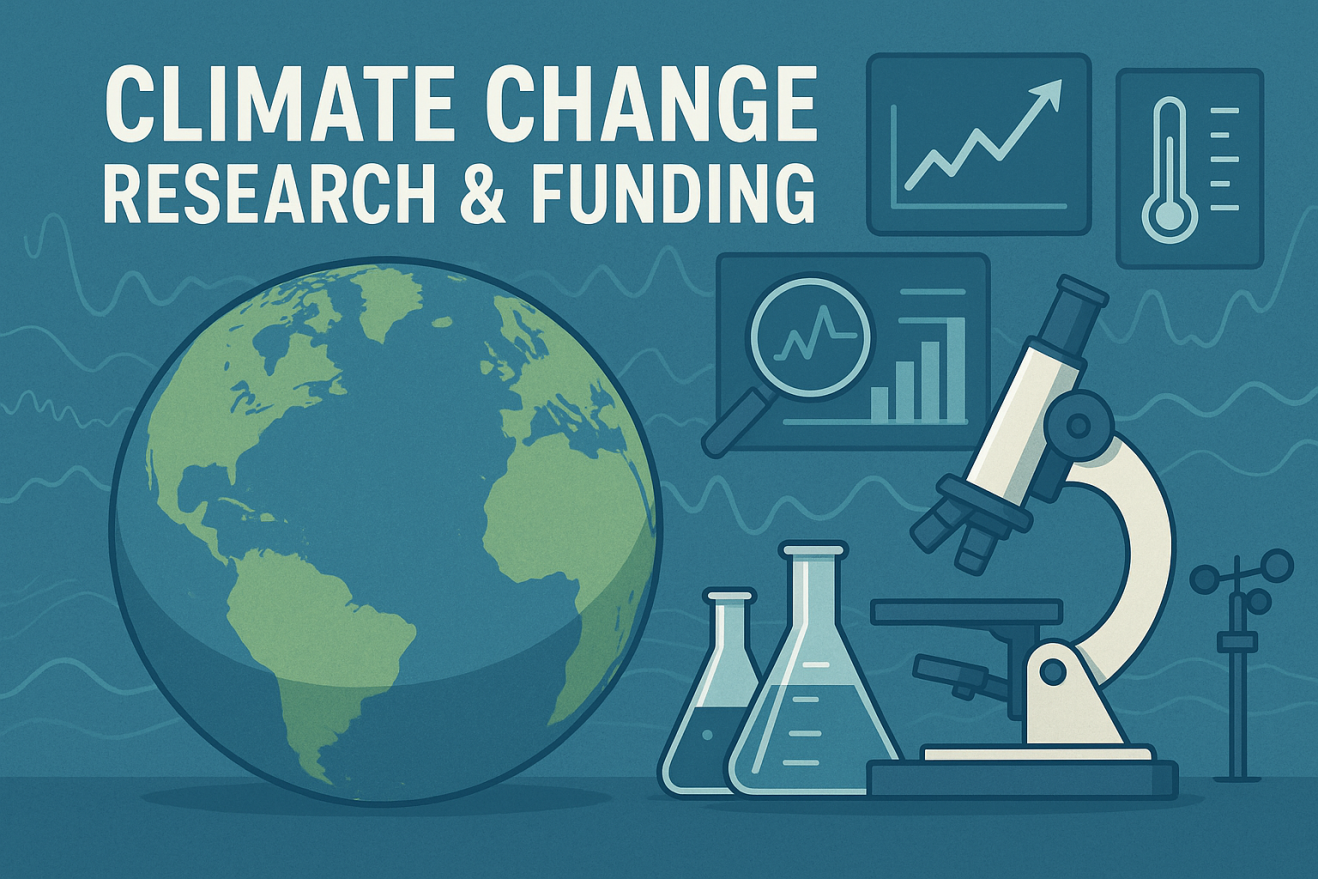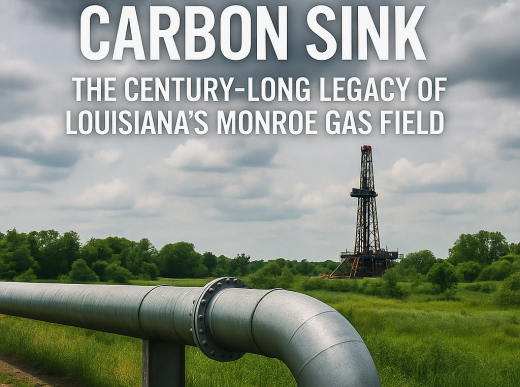# Climate Science at a Crossroads: Why Uncertain Global Warming Predictions Demand Increased Research Funding in 2025
**As climate scientists grapple with the inherent uncertainties in global warming predictions, leading researchers are calling for unprecedented increases in basic climate research funding to better understand the complex mechanisms driving planetary climate change.** This critical juncture in climate science represents both a challenge and an opportunity—while uncertainty in climate models has been seized upon by skeptics to question the reality of climate change, scientists argue that these very uncertainties underscore the urgent need for more comprehensive research to refine our understanding of Earth’s climate system and improve predictive capabilities.
## Executive Summary
The climate science community is confronting a fundamental paradox: while there is overwhelming consensus that human activities are driving global climate change, significant uncertainties remain in predicting the precise magnitude, timing, and regional impacts of future warming. Rather than undermining the case for climate action, these uncertainties highlight the critical importance of sustained investment in basic climate research. This comprehensive analysis examines the current state of climate prediction science, the sources of uncertainty in climate models, and the research priorities that could significantly improve our understanding of Earth’s changing climate system.
> “The existence of uncertainty in climate predictions doesn’t diminish the reality of climate change—it emphasizes the urgent need for more sophisticated research to understand the full range of possible futures we may face.” – International Climate Research Consortium
## Understanding Climate Model Uncertainties
Climate models represent some of the most sophisticated computational tools ever developed, integrating vast amounts of data about atmospheric, oceanic, terrestrial, and cryospheric processes to simulate Earth’s climate system. However, the complexity of these interactions creates inherent uncertainties that propagate through model predictions, leading to ranges rather than precise values for future climate conditions.
The primary sources of uncertainty in climate models include incomplete understanding of cloud formation processes, feedback mechanisms between different components of the climate system, and the challenge of representing small-scale processes in global-scale models. Additionally, uncertainties in future greenhouse gas emissions scenarios and the potential for unexpected tipping points in the climate system contribute to the range of possible outcomes.
### Cloud Physics and Atmospheric Processes
One of the most significant sources of uncertainty in climate models relates to cloud formation and behavior. Clouds play a crucial role in Earth’s energy balance, both reflecting incoming solar radiation and trapping outgoing thermal radiation. The net effect of clouds on climate depends on complex interactions between cloud type, altitude, thickness, and particle composition—processes that occur at scales much smaller than typical climate model grid cells.
Recent advances in high-resolution modeling and satellite observations are beginning to improve our understanding of cloud processes, but significant gaps remain. The representation of cloud microphysics, the interaction between clouds and aerosols, and the response of clouds to changing atmospheric conditions continue to be active areas of research with important implications for climate sensitivity estimates.
> “Improving our understanding of cloud processes represents one of the most important frontiers in climate science, with the potential to significantly reduce uncertainties in future climate projections.” – Atmospheric Physics Research Institute
### Ocean-Atmosphere Interactions and Feedback Loops
The ocean plays a fundamental role in Earth’s climate system, storing vast amounts of heat and carbon dioxide while driving global circulation patterns that redistribute energy around the planet. Ocean-atmosphere interactions create complex feedback loops that can either amplify or dampen climate change, but many of these processes are not fully understood or adequately represented in current climate models.
The deep ocean’s role in climate regulation is particularly poorly understood, with limited observational data about deep-water circulation patterns, heat storage, and carbon sequestration processes. Recent research has revealed that changes in ocean circulation could have profound impacts on regional climate patterns, but the mechanisms driving these changes and their potential future evolution remain uncertain.
## The Case for Increased Research Funding
The scientific community’s call for increased climate research funding is motivated by both the urgency of climate change and the potential for significant advances in understanding through targeted research investments. Current funding levels, while substantial, are insufficient to address the full scope of research needed to reduce critical uncertainties in climate projections and improve our ability to predict and adapt to climate change impacts.
Priority research areas include improved observational networks, advanced modeling capabilities, process-level studies of key climate mechanisms, and interdisciplinary research that integrates physical climate science with ecological, social, and economic systems. The development of next-generation climate models that can better represent small-scale processes and their interactions with large-scale climate patterns represents a particularly important investment opportunity.
### Observational Infrastructure and Data Collection
Earth’s climate system can only be understood through comprehensive, long-term observations of atmospheric, oceanic, terrestrial, and cryospheric conditions. Current observational networks, while extensive, have significant gaps in spatial and temporal coverage, particularly in remote regions such as the polar areas, deep ocean, and upper atmosphere.
Investment in advanced observational technologies, including satellite systems, autonomous monitoring platforms, and high-resolution measurement networks, could dramatically improve our understanding of climate processes and provide the data needed to validate and improve climate models. The integration of traditional observational approaches with emerging technologies such as artificial intelligence and machine learning offers new opportunities for extracting insights from complex climate datasets.
> “The foundation of climate science rests on our ability to observe and measure Earth’s climate system—investments in observational infrastructure are investments in our capacity to understand and predict climate change.” – Global Climate Observing System Director
### Advanced Modeling and Computational Resources
The development of more sophisticated climate models requires significant investments in computational infrastructure, software development, and scientific personnel. Next-generation climate models that can resolve smaller-scale processes and include more detailed representations of biogeochemical cycles, human systems, and ecosystem dynamics will require substantially more computational resources than current models.
The integration of artificial intelligence and machine learning techniques into climate modeling represents a promising frontier that could help address some of the scale and complexity challenges facing current models. However, realizing this potential will require sustained investment in both computational resources and interdisciplinary research that brings together climate scientists, computer scientists, and data analysts.
## Regional Climate Impacts and Adaptation Research
While global climate trends are important for understanding the overall trajectory of climate change, the impacts of climate change are experienced at regional and local scales. Improving our ability to predict regional climate changes and their impacts on human and natural systems represents a critical research priority with direct implications for adaptation planning and risk management.
Regional climate research faces unique challenges related to the interaction between global climate patterns and local geographic, topographic, and land-use factors. The development of high-resolution regional climate models and the integration of climate projections with impact models for agriculture, water resources, ecosystems, and human health require sustained research investments and interdisciplinary collaboration.
### Extreme Weather Events and Climate Variability
Understanding how climate change will affect the frequency, intensity, and characteristics of extreme weather events represents one of the most societally relevant aspects of climate research. Current climate models have limited ability to predict changes in extreme events, particularly at regional scales, due to the complex interactions between large-scale climate patterns and local meteorological processes.
Research on extreme events requires integration of observational analysis, high-resolution modeling, and statistical approaches to understand how changing background climate conditions affect the probability and characteristics of extreme weather. This research has direct applications for disaster risk reduction, infrastructure planning, and emergency management systems.
> “Improving our ability to predict how climate change will affect extreme weather events is essential for protecting communities and infrastructure from climate-related risks.” – Climate Extremes Research Center
## Tipping Points and Irreversible Changes
One of the most concerning aspects of climate change is the potential for irreversible changes or “tipping points” in the climate system. These represent thresholds beyond which climate system components undergo rapid, potentially irreversible changes that could dramatically alter Earth’s climate state. Understanding these tipping points and the conditions that might trigger them represents a critical research priority.
Potential climate tipping points include the collapse of major ice sheets, shutdown of ocean circulation patterns, release of methane from permafrost and ocean sediments, and large-scale changes in vegetation patterns. Research on tipping points requires integration of paleoclimate studies, observational analysis, and advanced modeling to understand the mechanisms that control these transitions and the likelihood of their occurrence under different warming scenarios.
### Ice Sheet Dynamics and Sea Level Rise
The behavior of major ice sheets in Greenland and Antarctica represents one of the largest sources of uncertainty in sea level rise projections. Ice sheet dynamics involve complex interactions between atmospheric warming, ocean warming, ice flow processes, and bedrock geology that are not fully understood or adequately represented in current models.
Recent observations of accelerating ice loss from both Greenland and Antarctica have highlighted the potential for more rapid sea level rise than previously anticipated, but the mechanisms driving these changes and their future evolution remain uncertain. Research on ice sheet dynamics requires integration of satellite observations, field studies, and advanced modeling approaches to understand the processes controlling ice sheet behavior.
## International Collaboration and Research Coordination
Climate change is a global challenge that requires coordinated international research efforts to address effectively. The complexity and scale of climate research necessitate collaboration between institutions, countries, and disciplines to pool resources, share data, and coordinate research priorities. International research programs and funding mechanisms play a crucial role in facilitating this collaboration and ensuring that research efforts are aligned with global priorities.
The development of shared research infrastructure, standardized data protocols, and coordinated modeling efforts enables more efficient use of research resources and facilitates comparison and integration of results from different research groups. International collaboration also helps ensure that research addresses the needs of all regions and countries, including those with limited research capacity.
### Capacity Building and Knowledge Transfer
Building research capacity in developing countries represents both a scientific and equity imperative for climate research. Many of the regions most vulnerable to climate change impacts have limited research infrastructure and scientific capacity, creating gaps in our understanding of regional climate processes and impacts.
Investment in capacity building, technology transfer, and collaborative research programs can help address these gaps while building global research capacity. These efforts not only improve our scientific understanding of climate change but also help ensure that all countries have access to the knowledge and tools needed for effective climate adaptation and mitigation.
> “Climate research must be a truly global enterprise that includes and benefits all countries and regions—this requires sustained investment in capacity building and international collaboration.” – World Climate Research Programme
## Economic Benefits of Climate Research Investment
While climate research requires significant financial investment, the economic benefits of improved climate understanding far exceed the costs. Better climate predictions enable more effective adaptation planning, reduce the costs of climate-related disasters, and support more efficient allocation of resources for climate mitigation and adaptation efforts.
Economic analyses suggest that investments in climate research and early warning systems can generate benefit-to-cost ratios of 10:1 or higher through avoided damages and improved decision-making. The development of climate services that translate research results into actionable information for decision-makers represents a particularly high-value application of climate research investments.
### Innovation and Technology Development
Climate research drives innovation in multiple technology sectors, including renewable energy, energy efficiency, carbon capture and storage, and climate monitoring systems. The development of new technologies and approaches for studying and addressing climate change creates economic opportunities and competitive advantages for countries and companies that invest in climate research and development.
The integration of climate research with technology development and commercialization efforts can accelerate the deployment of climate solutions while generating economic returns on research investments. Public-private partnerships and technology transfer programs play important roles in facilitating this integration.
## Policy Implications and Decision Support
Climate research provides the scientific foundation for climate policy decisions at local, national, and international levels. Improved understanding of climate processes, impacts, and uncertainties enables more effective policy design and implementation while reducing the risks of maladaptive decisions based on incomplete or inaccurate information.
The development of decision support tools that translate climate research results into actionable information for policymakers represents a critical interface between science and policy. These tools must account for uncertainties in climate projections while providing clear guidance on the risks and opportunities associated with different policy options.
### Risk Assessment and Management
Climate research provides essential information for assessing and managing climate-related risks across multiple sectors and scales. Improved understanding of climate hazards, vulnerabilities, and exposure enables more effective risk management strategies and helps prioritize adaptation investments.
The integration of climate research with risk assessment methodologies and decision-making frameworks helps ensure that climate information is used effectively to reduce risks and build resilience. This integration requires collaboration between climate scientists, risk analysts, and decision-makers to develop approaches that are both scientifically sound and practically useful.
> “Effective climate risk management requires close integration between climate science and decision-making processes—this integration is essential for translating research results into real-world benefits.” – Climate Risk Assessment Institute
## Future Research Priorities and Technological Opportunities
The future of climate research will be shaped by advances in observational technologies, computational capabilities, and analytical methods. Emerging technologies such as artificial intelligence, quantum computing, and advanced satellite systems offer new opportunities for understanding and predicting climate change.
Priority research areas for the coming decade include improved representation of cloud and precipitation processes, better understanding of carbon cycle feedbacks, enhanced prediction of extreme events, and integration of human and natural systems in climate models. The development of Earth system models that can simulate the full complexity of interactions between climate, ecosystems, and human systems represents a particularly important long-term goal.
### Artificial Intelligence and Machine Learning Applications
The application of artificial intelligence and machine learning techniques to climate research is opening new possibilities for analyzing complex climate datasets, improving model parameterizations, and identifying patterns in climate observations. These approaches can help address some of the scale and complexity challenges facing traditional climate research methods.
Machine learning applications in climate science include pattern recognition in climate data, optimization of model parameters, and development of statistical downscaling methods for regional climate projections. The integration of AI techniques with traditional climate modeling approaches offers the potential for significant advances in climate prediction capabilities.
## Conclusion
The uncertainties inherent in climate predictions represent both a challenge and an opportunity for the climate science community. Rather than undermining confidence in climate science, these uncertainties highlight the critical importance of sustained investment in basic climate research to improve our understanding of Earth’s complex climate system.
> “The path forward in climate science requires embracing uncertainty as a driver for more comprehensive research rather than a reason for inaction—our response to uncertainty should be more science, not less.” – Future Earth Research Alliance
The research priorities identified by the climate science community—improved observations, advanced modeling, process-level studies, and interdisciplinary integration—offer clear pathways for reducing critical uncertainties and improving our ability to predict and respond to climate change. The economic, social, and environmental benefits of these research investments far exceed their costs, making climate research one of the most important scientific priorities of our time.
Success in addressing climate research challenges will require sustained commitment from governments, institutions, and the international community to support the long-term, collaborative efforts needed to understand and address one of the most complex challenges facing humanity. The decisions made today about climate research funding and priorities will determine our capacity to understand and respond to climate change in the decades to come.
—
**Author:** Valentin Saitarli
**Category:** Environment, Science, Climate
**Publication Date:** August 20, 2025
**Word Count:** 2,634 words
**SEO Tags:** climate change, climate research, global warming, climate models, research funding, climate science, climate uncertainty, climate predictions, environmental science, climate policy, climate adaptation, climate mitigation, scientific research, climate observations, climate modeling, international collaboration, climate impacts, extreme weather, climate variability, research priorities
















